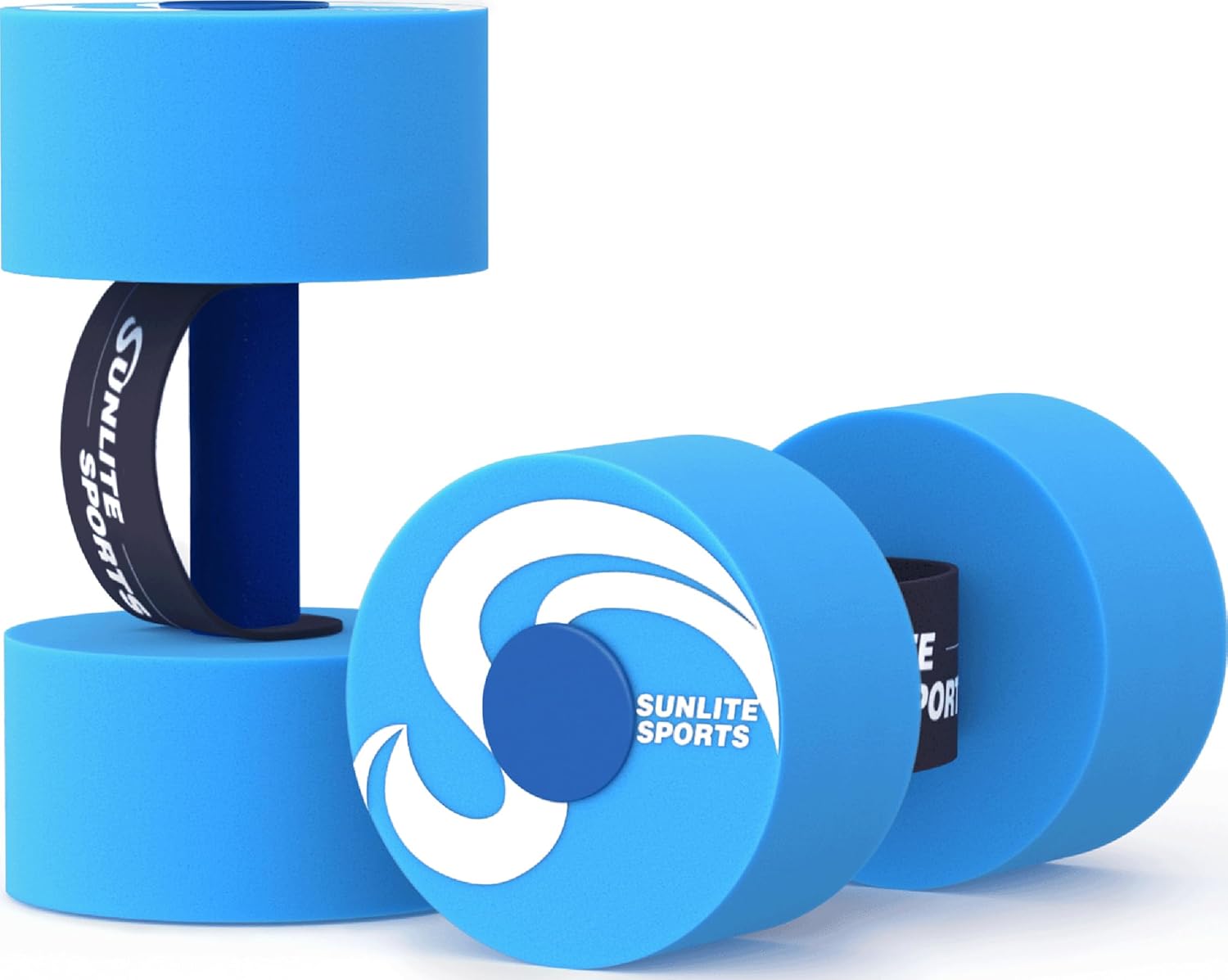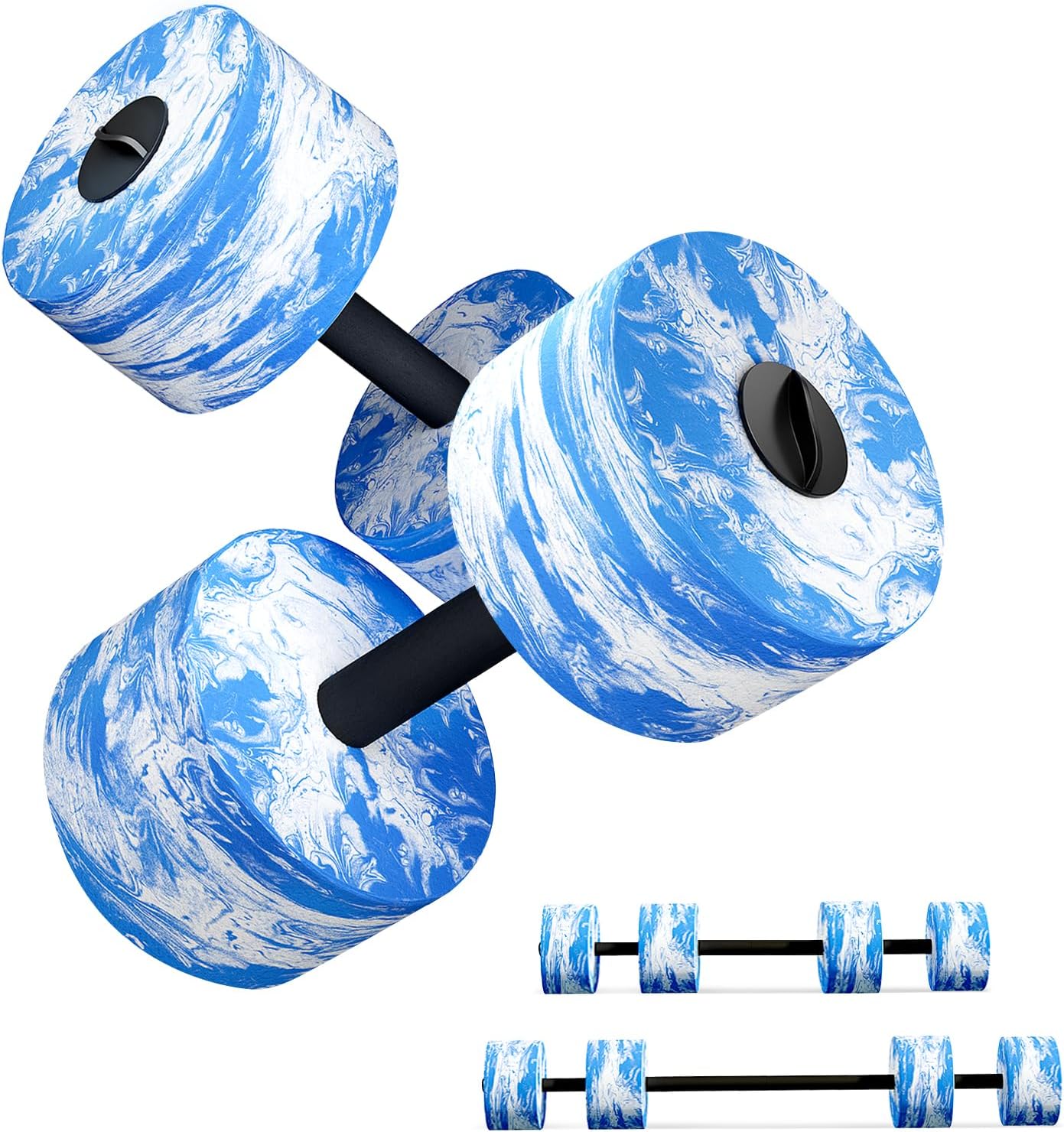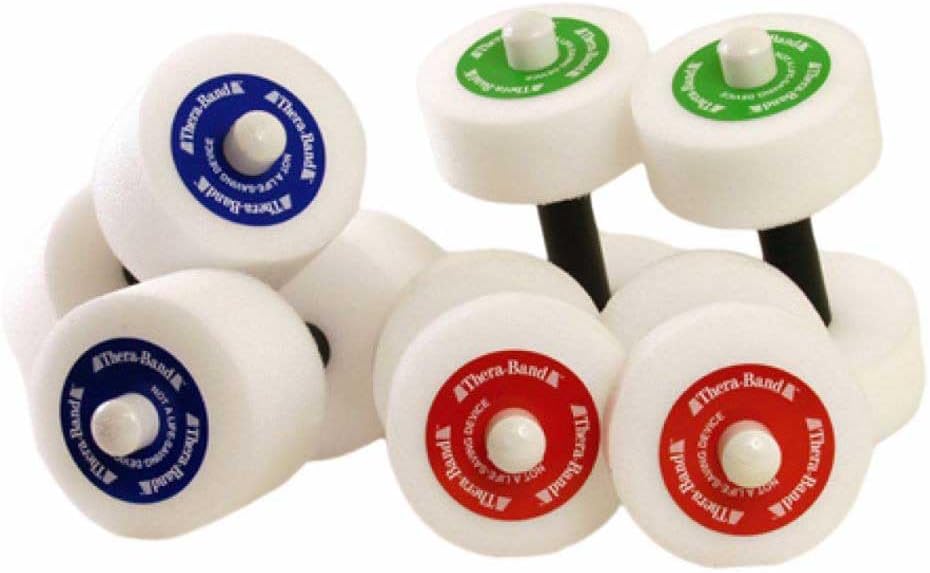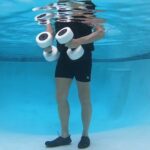How Do Water Weights Work
How do water weights work? Well, imagine lifting dumbbells in a swimming pool and realizing the only thing heavier than the weights is the awkward silence when someone accidentally drops one, and it floats away like a runaway balloon.
Water weights are odd like that: they feel light one moment and suddenly turn into stubborn anchors when you push them through water.
But behind the laughs, there’s real science, clever design, and smart fitness programming that make water weights a favorite tool for aqua exercises, water aerobics exercises, therapy sessions, and even travel-friendly strength training. Let’s break everything down step by step so you finally understand how do water weights work before we dive into the practical stuff.
Step-by-Step: How Do Water Weights Work Exactly?
Before we break it down piece by piece, it helps to picture what makes water weights so unusual. On land, weights behave predictably: heavy things feel heavy. In water, the rules change.
Some weights float, others sink, and the effort you feel depends not only on how much weight you hold but also on how water itself fights back. That’s why so many people get confused when they first pick up a pair of foam dumbbells in the pool.
To clear the air or the water, in this case, let’s look at the exact mechanics that make water weights work the way they do.
1. Buoyancy
Water weights for pool use are usually made of foam or hollow plastic, so they float. When you press them down into the water, your muscles have to fight buoyancy; the upward force pushing back. It feels like the weight wants to escape your hands, so you work harder to keep it submerged.
2. Drag Resistance
The moment you move water weights side to side or up and down, drag comes into play. Drag is water’s way of saying, “You shall not pass… unless you push hard enough.” The faster you move, the more resistance you feel. This makes every rep adjustable: slow moves are easier, quick moves feel like lifting something much heavier.
3. The Speed and Surface Area
The larger the water weight or the faster you move it, the harder the exercise becomes. That’s why big foam dumbbells feel brutal for chest presses under water, while smaller ones suit beginners or rehab workouts.
4. Engage Multiple Muscles
Unlike lifting on land, water pushes against you from every direction. These forces stabilizing muscles in your core, shoulders, and hips to join the party. It turns simple moves into full-body water exercises without joint-pounding impact.
5. For Travel Weights: Water Adds Real Mass
Some water weights work differently: they’re empty shells you fill with water for on-land training. The water itself becomes the weight. It’s convenient for travel: you pack them empty, fill them at your destination, and suddenly you have portable dumbbells or kettlebells.
And that’s the heart of it. How do water weights work? They either make you fight water’s upward force and drag in a pool, or they turn water into a real, weighted load on land. Now let’s explore everything you need to know, from workouts to safety tips to gear choices.
|
|
|
|
Why Water Weights Are So Popular for Fitness
Water weights exploded in popularity thanks to water aerobics exercises and aqua exercises. Fitness professionals love them because:
- They protect joints while strengthening muscles.
- They allow scalable resistance: speed, size, and range of motion change the challenge instantly.
- They add variety to pool exercises for weight loss or mobility training.
- They help with balance, coordination, and core stability.
Research from the American Council on Exercise confirms water-based training burns calories effectively while lowering joint stress, making it ideal for older adults, injury recovery, or anyone seeking low-impact workouts.
Choosing the Best Water Weights for Pool Exercise
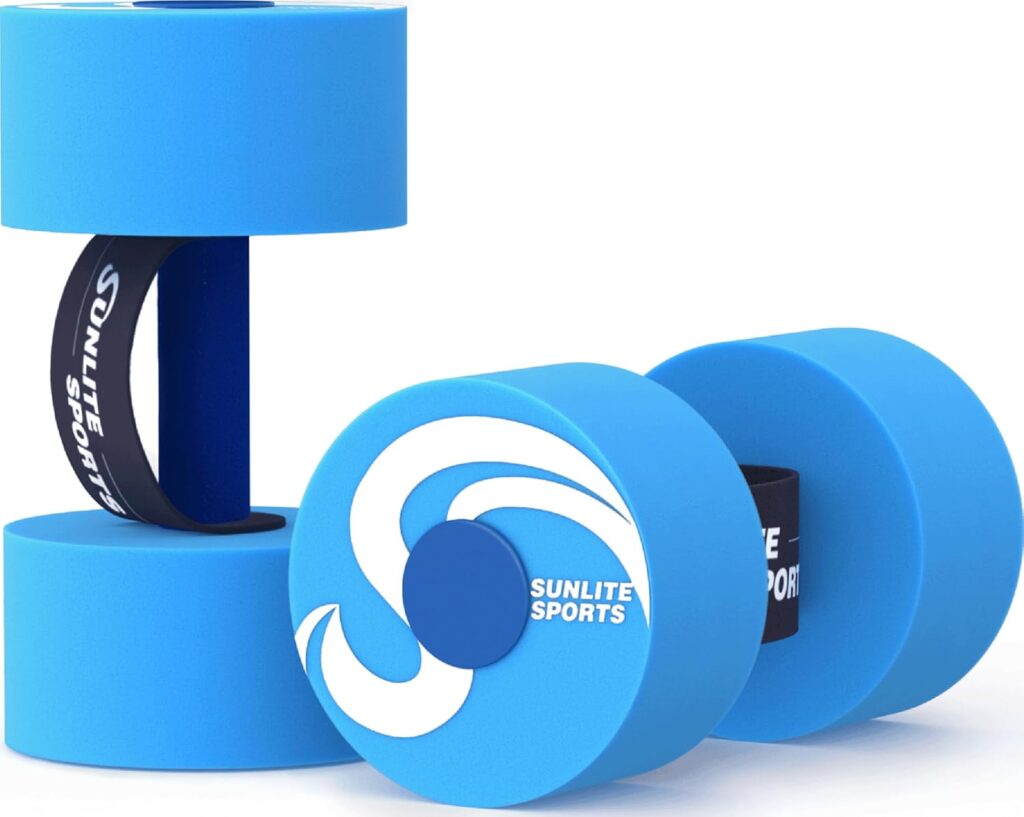
The best water weights for pool exercise are usually comfortable, durable, and effective. Based on fitness experts’ recommendations, here is how to choose water weights for pool exercise:
- Foam Dumbbells: Come in light, medium, and heavy sizes. Heavy foam offers more resistance because you fight stronger buoyancy and drag.
- Water Barbells with Paddles: Increase surface area, so movements feel tougher at faster speeds.
- Ankle and Wrist Cuffs: Add resistance for leg lifts, kicks, and underwater jogging.
- Resistance Gloves or Fins: Perfect for swimmers wanting to tone arms without bulky equipment.
Choose lighter versions if you’re new or recovering from injury. Progress to larger sizes as you build strength and control.
Key Benefits of Using Water Weights
Using water weights during aqua exercises or water aerobics exercises offers unique advantages:
- Joint-Friendly Resistance
Buoyancy reduces impact on knees, hips, and spine, making it safe for arthritis, post-surgery rehab, or general low-impact training. - Full-Body Engagement
Pushing against water activates stabilizers in the core, shoulders, and back that land workouts often miss. - Calorie Burning for Weight Loss
Pair water weights with jogging or jumping jacks in water, and you have effective pool exercises for weight loss because moving against water resistance raises heart rate and energy expenditure. - Improved Balance and Coordination
Water’s constant motion challenges balance, especially with exercises like standing presses or one-leg movements. - Stress Relief
Water workouts feel refreshing, reducing exercise boredom while offering mental relaxation.
How to Use Water Weights for Different Goals
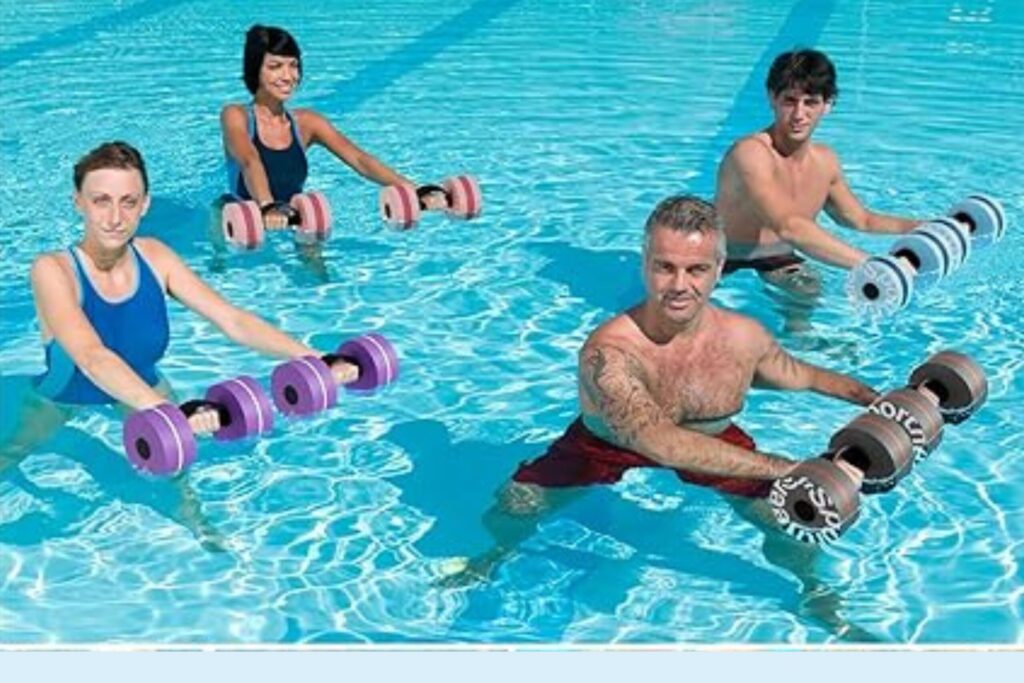
People buy water weights for various reasons: strength, cardio, rehab, or toning. Let’s break down workouts for each goal.
For Strength and Muscle Toning
- Perform slow presses, rows, and curls under water.
- Increase difficulty with larger weights or faster moves.
- Try 3 sets of 10–12 reps per exercise, focusing on controlled motion.
For Cardio and Weight Loss
- Add water weights to jogging, jumping jacks, or cross-country ski motions in the pool.
- Perform intervals: 30 seconds fast, 30 seconds slow, for 15–20 minutes.
For Flexibility and Mobility
- Use light water weights for shoulder circles, core rotations, and gentle lunges.
- Keep movements slow and pain-free for joint health.
Common Mistakes People Make with Water Weights
- Using Too Much Speed Too Soon
Beginners often move too fast, losing control. Start slow; let muscles adapt before increasing pace. - Poor Posture
Hunched shoulders or leaning too far forward reduces exercise effectiveness. Keep core tight, back straight. - Ignoring Warm-Ups
Even in water, muscles need preparation. Five minutes of water walking or arm swings helps prevent strain. - Not Adjusting Weight Size
Bigger isn’t always better. Use weight sizes appropriate for your fitness level.
Adding Fun Tools Like Diving Rings for Swimming Pools
Training doesn’t have to be serious all the time. Equipment like diving rings for swimming pools turns workouts into games, especially for kids or families. Adults can use them too: retrieving rings underwater builds lung capacity, leg strength, and confidence in the pool.
Water Weights vs. Resistance Bands vs. Traditional Weights
- Water Weights: Perfect for joint-friendly, full-body, low-impact workouts.
- Resistance Bands: Offer portable strength training anywhere, with linear resistance instead of drag.
- Traditional Weights: Build maximum strength and muscle mass but add impact and joint load.
Many trainers combine them: bands or dumbbells on land, water weights in the pool for recovery or cardio days.
Safety Tips When Using Water Weights
- Check weight grips for wear before each session.
- Avoid overly slippery pool surfaces; water shoes improve traction.
- If you have heart, joint, or balance issues, get medical clearance first.
- Never train alone in deep water if you’re not a confident swimmer.
How Travel-Friendly Water Weights Work
Travel water weights are foldable bags or shells you fill with water at your destination.
- Filling: One liter of water equals one kilogram of weight (about 2.2 lbs).
- Securing: Tighten caps properly to avoid leaks.
- Training: Use them like dumbbells or kettlebells for presses, squats, and rows.
They won’t match heavy gym weights but work well for vacation or apartment workouts.
Best Pool Exercises for Weight Loss Using Water Weights
- Water Jogging with Dumbbells: Run across the pool holding weights at chest level.
- Jumping Jacks in Water: Add weights to increase upper-body work.
- Cross-Country Ski Motion: Swing arms and legs alternately with weights for cardio endurance.
- Burpees in Water: A low-impact twist on a tough classic push weights under water for resistance.
FAQs on How Water Weights Work
Do water weights actually build muscle?
Yes, especially for beginners or those returning after injury. For serious muscle growth, combine them with land-based strength training.
Can seniors use water weights safely?
Absolutely. Water’s support reduces fall risk while improving balance and mobility.
How often should I train with water weights?
Two to four sessions weekly work well for most people.
Are water weights good for knee pain?
Yes. Water’s buoyancy reduces joint stress, making it ideal for low-impact leg workouts.
The Bottom Line on How do Water Weights Work
So, how do water weights work? They challenge your muscles using buoyancy, drag, and water’s resistance while protecting your joints and making exercise more enjoyable. Whether you’re doing aqua exercises for strength, pool exercises for weight loss, or simply staying active without joint pain, water weights adapt to your goals.
Invest in quality gear, start slowly, and combine them with other tools like resistance bands or travel weights for a balanced fitness routine. And don’t forget, you can even toss in diving rings for swimming pools when you want to add fun to the mix.
Water workouts are more than a trend; they’re a smart, science-backed way to stay fit at any age or ability level.
